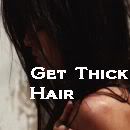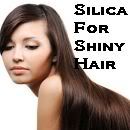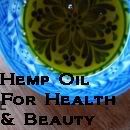
13 very helpful external tips, for getting and maintaining beautiful and healthy hair, that you may not have known about.
stimulate your scalp
A healthy scalp is essential if you want to have healthy hair. Massaging your scalp for 5 minutes a day can make your hair stronger, thicker, and grow in faster. You can choose to do it dry, or use an oil or scalp treatment to assist you. You can even do it while you are shampooing. Massage stimulates your scalp's blood supply. The blood brings nutrients to the follicles and that helps the follicles do their work. As an added benefit, scalp massage is a great stress reducer. Less stress=more beautiful hair.
Remember to use the pads of your fingers, never your nails. Spread your fingers apart and place them firmly on your head. Start at the base of your neck and work your way up to your front hairline. Move in little circles. You may feel tingly; that's your improved circulation.
Remember to use the pads of your fingers, never your nails. Spread your fingers apart and place them firmly on your head. Start at the base of your neck and work your way up to your front hairline. Move in little circles. You may feel tingly; that's your improved circulation.
argan oil
Argan oil is proving to be one of the best oils for hair treatments around. It has been labelled a ‘miracle oil’ by everyone who uses the oil whether on their hair, skin or body.
This liquid gold oil has so many benefits when used in any hair treatments and it leaves hair silky, smooth and full of lustre. If you have slightly damaged hair from over styling, this is one of the best hair treatments you could ever use to restore the natural shimmer and shine to it in no time at all.
I recommend this argan oil.
I recommend this argan oil.
use less shampoo or none at all
Your hair produces its own natural oils which promote healthy hair. Shampoo strips your hair of these naturally beneficial oils and conditioner basically artificially replaces these oils promising to leave your hair soft, shiny, voluminous, frizz free, the list goes on and on. Why fix what isn't broken?
The body, when given the chance, is designed to balance itself. Hair follicles produce sebum to moisturize and protect the hair. When natural oils are stripped by shampoo, especially if you wash daily with harsh cleansers, the follicles compensate by producing more sebum, making your hair look and feel greasy. You often don’t realize how much your shampoo is damaging your hair, especially if you use a conditioner, which provides a quick but temporary solution.There is a large following of people who either cut back on shampooing or forgo the shampoo all-together. They call it the no-poo method. Read more about the no-poo method here and here.
The body, when given the chance, is designed to balance itself. Hair follicles produce sebum to moisturize and protect the hair. When natural oils are stripped by shampoo, especially if you wash daily with harsh cleansers, the follicles compensate by producing more sebum, making your hair look and feel greasy. You often don’t realize how much your shampoo is damaging your hair, especially if you use a conditioner, which provides a quick but temporary solution.There is a large following of people who either cut back on shampooing or forgo the shampoo all-together. They call it the no-poo method. Read more about the no-poo method here and here.
amla oil
The secret to beautiful hair in India, amla oil is widely-used in India and can help to enrich and nourish your hair. Amla is beneficial when applied to the hair because it infuses nutrition into your hair follicles promoting pigmentation (color) of the hair, and it prompts hair growth. Amla bolsters the strength of your hair’s roots, and helps maintain luster and hair health. Amla oil is said to prevent infections of the scalp. Here is some recommended oil. You can also use the powder.
shea butter
Shea butter provides moisture to dry or damaged hair from the roots to the very tips, repairing and protecting against weather damage, dryness and brittleness. It also absorbs quickly and completely into the scalp to rehydrate without clogging pores. It is particularly beneficial for processed and heat-treated hair. It is an excellent treatment for dry scalp. It restores luster to damaged hair. Its anti-inflammatory properties heal damaged scalp and help clear any infections. It works well against dandruff too. It also helps to de-stress hair that has been affected for too long by pollution. Damaged and brittle hair can be conditioned and revitalized by its moisturizing properties. It soothes and softens dry hair. As shea butter is light and non-greasy, it can also be applied as a leave-in for hair. This will help to shield hair by locking or concealing the moisture in.
You likely know that scalding hot water is a no-no in the shower; it robs skin of vital moisturizing agents, making chaffing and chapping more likely. Guess what? The same methodology applies to your hair as the skin on your head (scalp) is a key player in maintaining the health of your locks. So, when you're washing up, stick to warm or room temperature water when possible, and rinse out conditioner with cooler water to lock in the hydrating, conditioning benefits.
coconut oil
According to one study, which compared mineral oil, sunflower oil, and coconut oil as possible products for nurturing and conditioning hair, coconut oil was the only oil that reduced protein loss for both damaged and undamaged hair. These findings were true when used as either a pre-wash or post-wash grooming product, but coconut oil achieved the greatest results when used as a pre-wash treatment.
Part of the reason for this is because coconut oil is hydrophobic, meaning it repels water.
So when applied as a pre-wash conditioner, it inhibits the penetration of water into each strand, which would otherwise cause the cuticle, or surface of the hair shaft, to rise, making it prone to damage and breakage.
Furthermore, when applied as a pre-wash treatment, a small amount of the coconut oil is able to penetrate deeper into the hair shaft during the wash, when the hair fiber swells slightly.
use natural ingredients
Many hair care products on the market are actually working against your goal of strong, healthy, lustrous hair. Most shampoos contain harsh detergents and drying ingredients that strip the sebum from your hair. Understanding the basics of healthy hair helps guide your decision to embrace natural or do it yourself hair products and forgo mass-marketed products.
Ingredients to avoid if you want beautiful hair:
Isopropyl alcohol
Mineral oil and petroleum
PEG
Propylene glycol
Sodium lauryl sufate
Sodium laureth sulfate
Chlorine
DEA
Fragrance
Ingredients to avoid if you want beautiful hair:
Isopropyl alcohol
Mineral oil and petroleum
PEG
Propylene glycol
Sodium lauryl sufate
Sodium laureth sulfate
Chlorine
DEA
Fragrance
turn down the heat
Although you may be tempted to blow dry, curl, straighten, perm or color your hair (or, do all of the above), consider the ramifications of overdoing it. The more you process your locks (be it to tweak the color, texture or look of your hair), the worse off you are in terms of overall hair health -- including shine and softness. Scale back on what you do: for example, use heat styling tools every other day (rather than daily), and color treat every three months (rather than every six to eight weeks). Your hair will look so much shinier and have less split ends as a result, says actress and model Natalie Dickinson.
mix it up
It's not just a myth: your hair can become immune (so to speak) to a shampoo and conditioner. With prolonged use, you may not see the desired results you once did. What to do? Keep a second stash of products in your shower, and twice a week, swap your standard for your secondary.
use hair products with protein
If your hair needs protection from breaking, increased luster and smoothness or added control, protein enriched hair product, such as shampoos, can add the benefits you need. They actually penetrate the hair shaft and repair.
For instance, corn protein has a higher weight, meaning its properties are more suited for restoring shine to dullness resulting from over-styling or coloring treatments.
Rice protein on the other hand has a lower molecular weight and is best suited for penetrating to help rebuild protein bond responsible for making hair's tensile strength high - reducing split-ends and tearing.
Silk protein, probably the most widely known, provides flexibility allowing hair to shape and hold its style. This adds improved smoothness and softness lowering friction while brushing, combing, or while using styling tools such as flat irons.
There are many other protein sources. Here is a homemade protein conditioner
There are many other protein sources. Here is a homemade protein conditioner
use ceramides
Ceramides are naturally occurring lipids (or fatty materials) found in the hair fiber or naturally in the skin. Think of ceramides as hair glue. Without them, our cuticle layers would simply fall off and unhinge themselves, rather than gently weather and erode, from the constant damage they endure. Damaged hair has typically exhausted its natural supply of ceramides, and is often brittle, dry, and difficult to manage as a result. Many hair products contain synthetic, lab-created ceramides to help replace the ceramides naturally lost from the hair during regular washing, styling, and chemical treating. Ceramides are needed as a part of any basic moisture and protein conditioning plan to restore the hair’s health.
Ceramides perform a “barrier function” and help reduce the hair’s overall porosity. Ceramides bind to the hair fiber in damaged, vulnerable areas to help prevent natural moisture and protein loss that occurs when we manipulate our hair. Natural ceramides keep the hair fiber tight, and cuticles flat so that the hair shines and has low porosity.
Oils containing ceramides
Barley Malt Oil
Eucalyptus Oil
Hemp Seed Oil
Kukui Oil
Sunflower Oil
Walnut Oil
Wheat Germ Oil
apply a hair mask
Mash a ripe avocado (pit removed) with one egg (from free-range, happy chickens) and some oil of your choice, then apply to wet hair. Avocados are rich in vitamins, essential fatty acids and minerals that will help restore lustre to your hair, says Stephen Sanna, expert colourist at the Pierre Michel Salon in New York City. Leave on for at least 20 minutes, then rinse several times. Repeat once a week for damaged hair and once a month for healthy hair.Barley Malt Oil
Eucalyptus Oil
Hemp Seed Oil
Kukui Oil
Sunflower Oil
Walnut Oil
Wheat Germ Oil
apply a hair mask
Thanks for reading! What do you think?
You Might Also Like-



Filed under Hair
Please leave a comment below
__________________________________________________________

